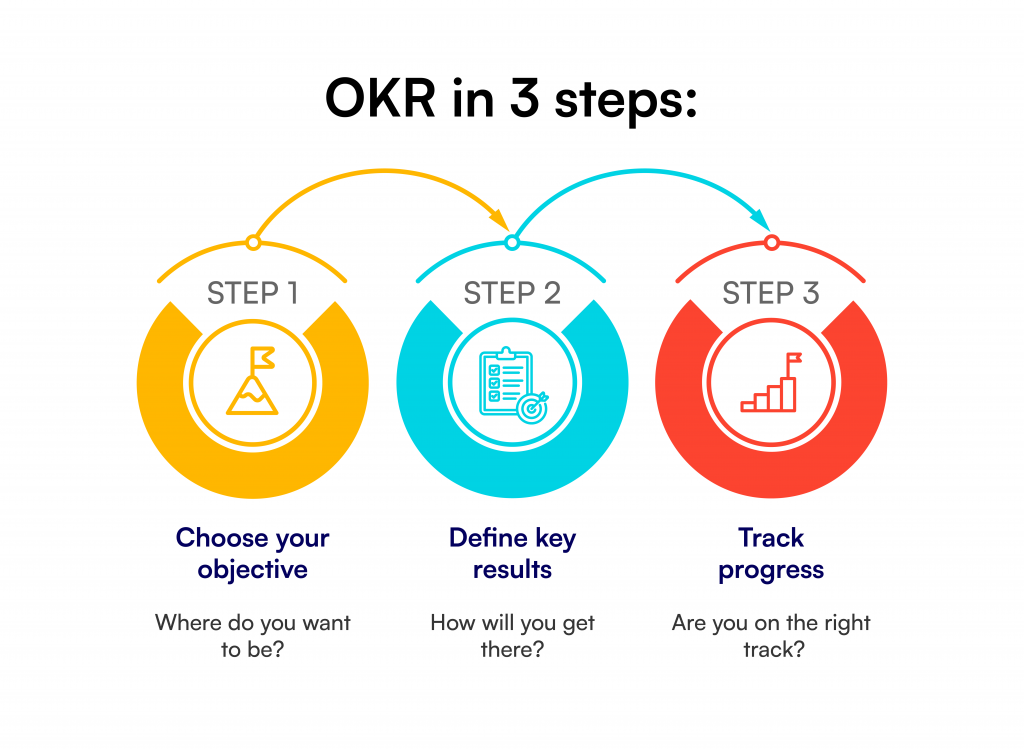Did you know companies worldwide spend a staggering $35 million annually conducting performance reviews? Besides, managers spend an average of 210 hours yearly on performance management activities.
That sounds tiring and a lot. This is why traditional performance management approach is increasingly seen as ineffective and costly as we move forward.
These outdated systems drain resources, discourage teamwork, lack flexibility, and can even demotivate employees.
That’s where a solid performance management framework comes in. It’s not just about evaluations; it’s about clear, consistent, and constructive conversations that align your team’s efforts with your company’s goals.
In this blog, we’ll explore why establishing an effective performance management system is essential and how it can transform your organization from the inside out.
What Is a Performance Management Framework?
A performance management framework is a structured system used by organizations to monitor, evaluate, and enhance the performance and productivity of their employees.
This framework typically involves:
- Setting clear objectives
- Continuously assessing progress through feedback and reviews
- Using the insights gained to guide development and rewards
Providing a clear path for performance improvement helps employees and the organization adapt and thrive in a competitive business environment.
Key components of the framework
A performance management framework’s key components ensure you and your team can achieve peak productivity and satisfaction. Here’s what you need to focus on:
- Goal Setting: Set clear, achievable goals that align with your company’s strategic vision, ensuring all your efforts drive toward larger objectives.
- Monitoring: Consistently track your progress. This will allow you to adjust your strategies promptly to stay aligned with your goals.
- Evaluation: Regularly assess your performance against predefined criteria to gauge success and pinpoint improvement areas.
- Feedback: Offer constructive feedback that motivates and directs you and your team to enhance performance and reach your full potential continually.
Suggested Read:
The Ultimate Guide to Performance Management for HR Leaders
Why Implement a Performance Management Framework?
Implementing a performance management framework is essential for fostering a culture of continuous improvement and alignment within an organization. It benefits organizations and employees alike. For instance:
1. It Improves Employee Performance And Productivity
The framework helps pinpoint performance gaps and offers mechanisms like training and development to enhance skills, directly boosting productivity and output.
2. It helps Align Individual Goals with Company Goals
By setting objectives that reflect the company’s strategic direction, employees understand their role in the bigger picture, which enhances engagement and job satisfaction.
3. It Reduces Turnover Costs
By enhancing job satisfaction and providing clear pathways for career development, a well-executed framework reduces employee turnover, which can significantly reduce the high costs associated with recruiting and training new staff.
4. It Helps Optimize Performance Incentives
The framework allows for a more accurate assessment of employee contributions, enabling organizations to tailor compensation and rewards effectively. This optimizes expenditures and boosts employee motivation by aligning rewards directly with performance outcomes.
Steps to Creating a Performance Management Framework
Creating a performance management framework is a strategic process that ensures your organization’s goals are met through consistently monitoring and evaluating employee performance. Here’s how to start:
Step 1: Define Clear Objectives and Goals
Set SMART goals—Specific, Measurable, Achievable, Relevant, and Time-bound—to outline what you expect to achieve clearly.

For example, a well-defined goal could be “Increase sales by 15% in the next quarter through enhanced customer outreach.”
Step 2: Develop Performance Metrics
Establish Key Performance Indicators (KPIs) and Objectives and Key Results (OKRs) to track and measure success effectively. For instance, a sales team might use metrics like ‘monthly sales growth’ or ‘customer retention rate,’ while a tech team could focus on ‘code deployment speed’ or ‘system uptime.’
Step 3: Implement Performance Management Software
Explore popular options like PeopleStrong to:
- Streamline the tracking and management of performance
- Enhance data accuracy and accessibility
- Facilitate better decision-making and planning
PeopleStrong’s performance management module aligns employee efforts with organizational goals to foster a high growth and agility culture. It features simplified goals and OKRs, continuous feedback, and robust performance metrics that enhance managerial effectiveness and strategic execution.
The platform supports real-time performance tracking and development, allowing for flexible, intelligent adjustments that optimize individual and team performance.
Suggested Read:
9 Best Performance Management Software In India
Step 4: Establish a Regular Review Process
Emphasize the importance of annual reviews and frequent check-ins to monitor progress and adapt goals as needed. A structured review process might include quarterly performance evaluations and weekly or monthly team meetings.
Step 5: Provide Continuous Feedback and Support

Master techniques for giving constructive feedback that motivates and guides improvement. Continuous support and coaching are crucial for employee development, helping individuals realize their potential and achieve career goals.
Step 6: Conduct Performance Appraisals
Outline a clear, fair appraisal process that evaluates employee performance against established criteria. An effective system could involve self-assessments, peer reviews, and manager evaluations, culminating in a comprehensive annual performance review.
What Are the Different Performance Management Frameworks?
Various performance management frameworks exist to help organizations optimize their internal functions and enhance outcomes. Let’s look at the top four performance management frameworks:
1. Balanced Scorecard

The Balanced Scorecard is a strategic planning and management system used widely in business and industry, government, and nonprofit organizations worldwide.
It enhances the traditional financial evaluation with metrics for customer, business process, and organizational capacity perspectives. The benefits include improved strategic alignment, enhanced communication of the organization’s vision, and better internal process management.
For example, a company might implement BSC by setting specific metrics such as customer satisfaction rates, internal process quality, employee training levels, and financial returns. This provides a comprehensive view that helps make balanced strategic decisions. This holistic approach ensures that strategic actions are aligned across all organization segments, promoting synergy and efficiency.
2. 360-Degree Feedback

The 360-degree feedback system enhances performance management by incorporating feedback from all directions:
- Supervisors
- Peers
- Subordinates
- Sometimes even clients
This holistic approach offers a multi-faceted view of an employee’s performance and enables companies to better understand their employees’ strengths and areas for improvement.
The key impact of implementing 360-degree feedback is its potential to improve organizational communication and development. Involving various perspectives encourages a culture of open dialogue and continuous improvement.
However, challenges such as increased bureaucracy and potential political tensions can arise. However, it can be overcome by careful management and clear guidelines to ensure the system’s effectiveness and minimize its downsides.
3. Management by Objectives (MBO)

Management by Objectives (MBO) is a strategic framework that focuses on setting and achieving goals collaboratively between managers and employees.
This approach enhances employee motivation and commitment by involving them in goal-setting. The impact is significant, leading to better alignment of individual and organizational objectives, improved communication, and increased accountability.
For example, in a sales department, MBO might involve setting a goal to increase quarterly sales by 15%. The team would then develop a plan to achieve this target, track progress, and receive regular feedback and rewards based on their performance.
4. OKR (Objectives and Key Results)

Objectives and Key Results (OKR) is a performance management framework that helps organizations set and achieve specific goals by defining clear objectives and key result areas (KRAs). Objectives are the targets to be achieved, while KRAs are the measurable tasks that lead to these objectives.
For example, “We will achieve a 20% increase in sales by excelling in customer outreach, product quality, marketing strategies, and sales training.” OKRs are time-bound, allowing for regular measurement and analysis.
Suggested Read:
OKRs (Objectives and Key Results) | Guide for HR Leaders
PeopleStrong’s performance management system is designed to enhance agility and promote a growth-oriented culture. It enables businesses to align employee goals with organizational objectives through simplified goals and OKRs (Objectives and Key Results).
The system offers
- Configurable multiple goal frameworks with real-time goal tracking and updates on any device.
- Continuous feedback mechanism and a 360-degree feedback loop to boost managerial effectiveness and mentoring.
- Robust analytics and performance dashboards for informed decision-making and identification of high performers.
- Comprehensive talent profiles with a holistic view of employee skills, competencies, and achievements.
You can also leverage our exclusive OKR guide and OKR template to make its implementation straightforward and effective for your company.
Keep in mind:
No matter which performance management framework your organization leans towards—PeopleStrong’s versatile system can seamlessly integrate with it. Our platform is designed to adapt to various frameworks. This ensures you can tailor your performance management process to fit your unique organizational needs perfectly.
In Conclusion
One-third of U.S. companies are moving away from the traditional appraisal process. Additionally, nearly 70% of companies are updating or have recently reviewed their performance management systems.
This shift shows the critical importance of an effective performance management framework in today’s business environment. By implementing the steps and frameworks discussed, you can align individual efforts with organizational goals, boost productivity, and foster continuous improvement.
A robust performance management system leads to higher engagement, better communication, and strategic success. Start transforming your performance management today with Peoplestrong’s comprehensive performance management software.
Unlock the full potential of your performance management process with PeopleStrong's revolutionary solutions. Our team of experts is dedicated to helping you create a culture of continuous feedback and development, ensuring your organization stays ahead of the competition. Contact us today and discover how PeopleStrong can transform your performance management process into a more efficient, effective, and rewarding experience.
Contact Us Now













